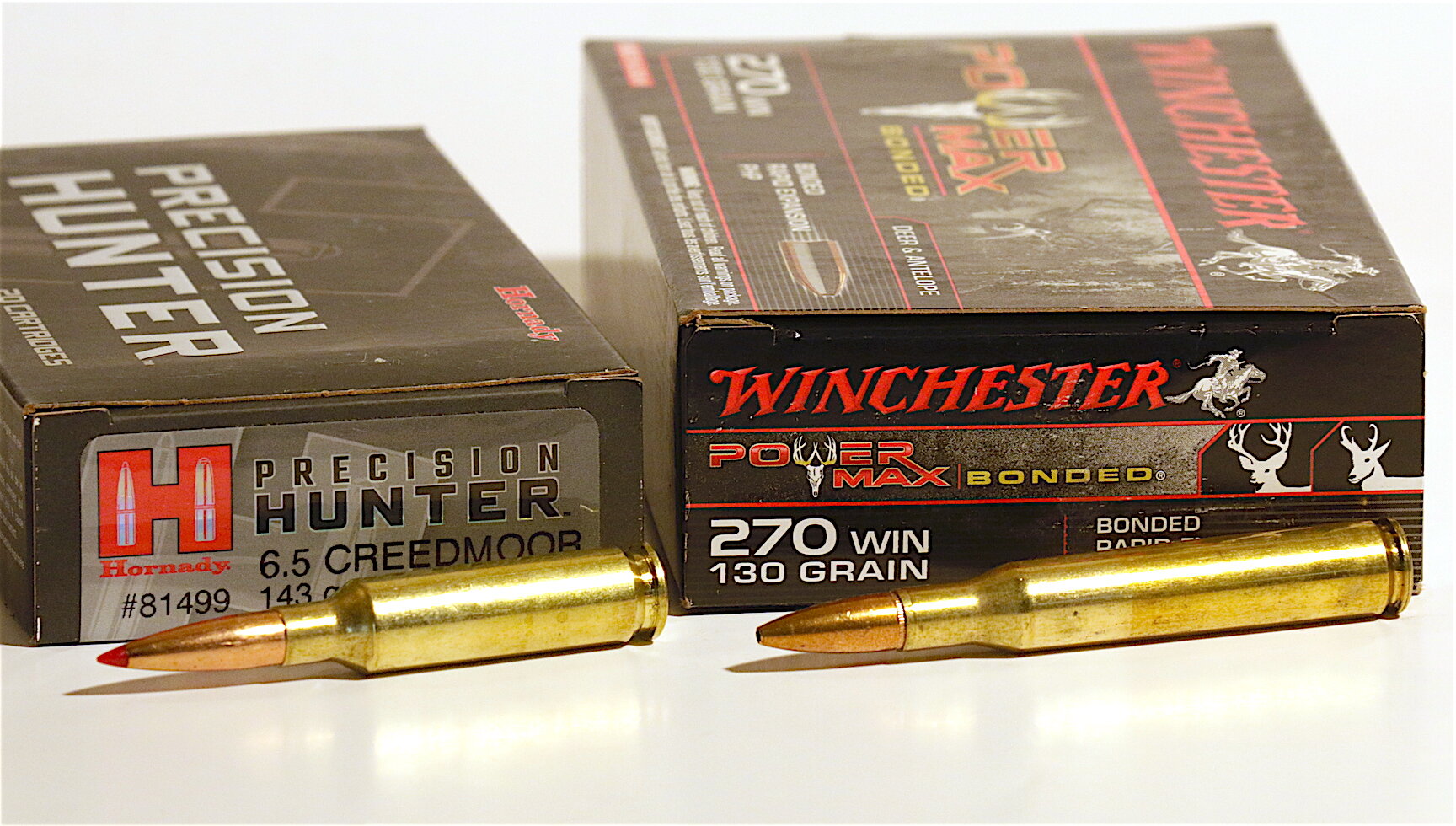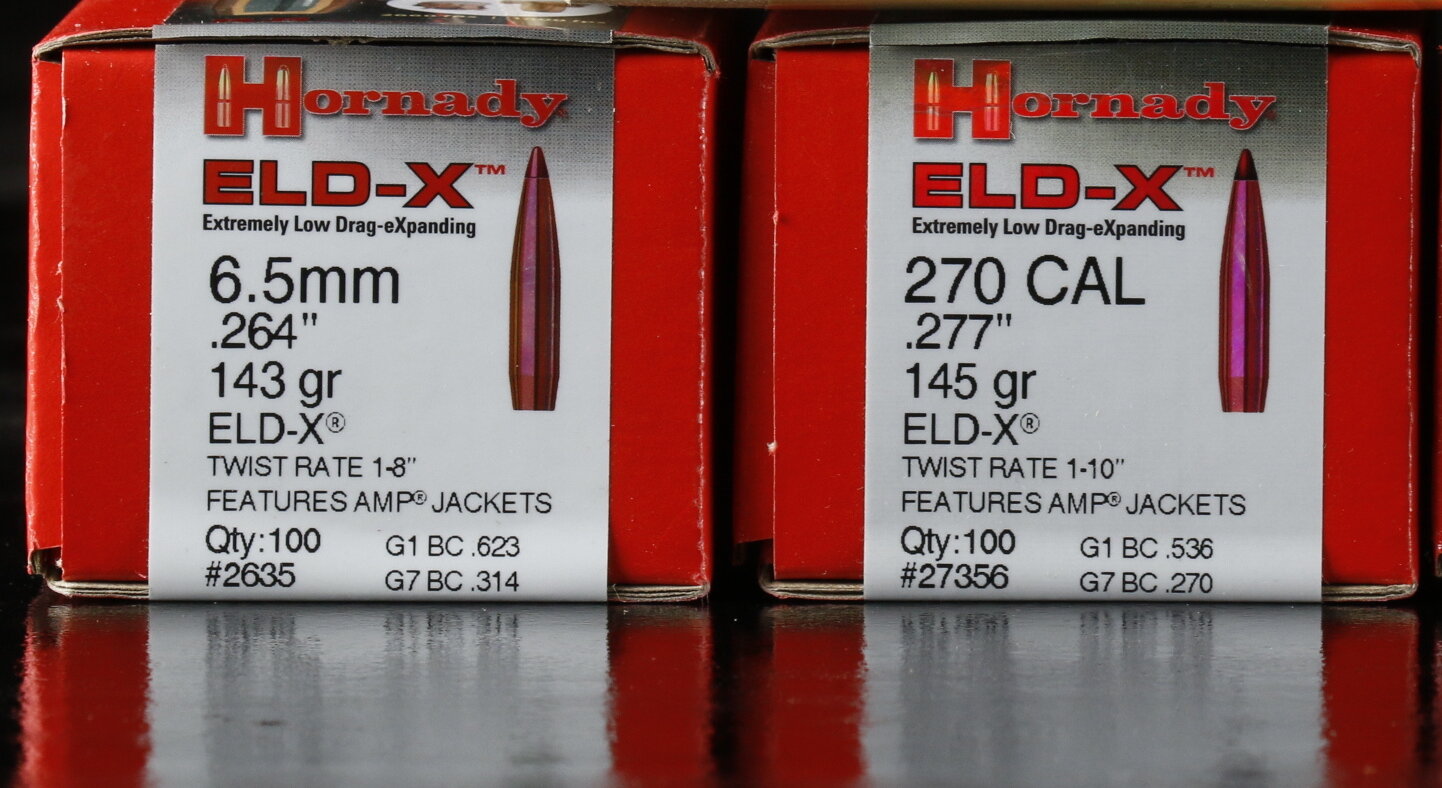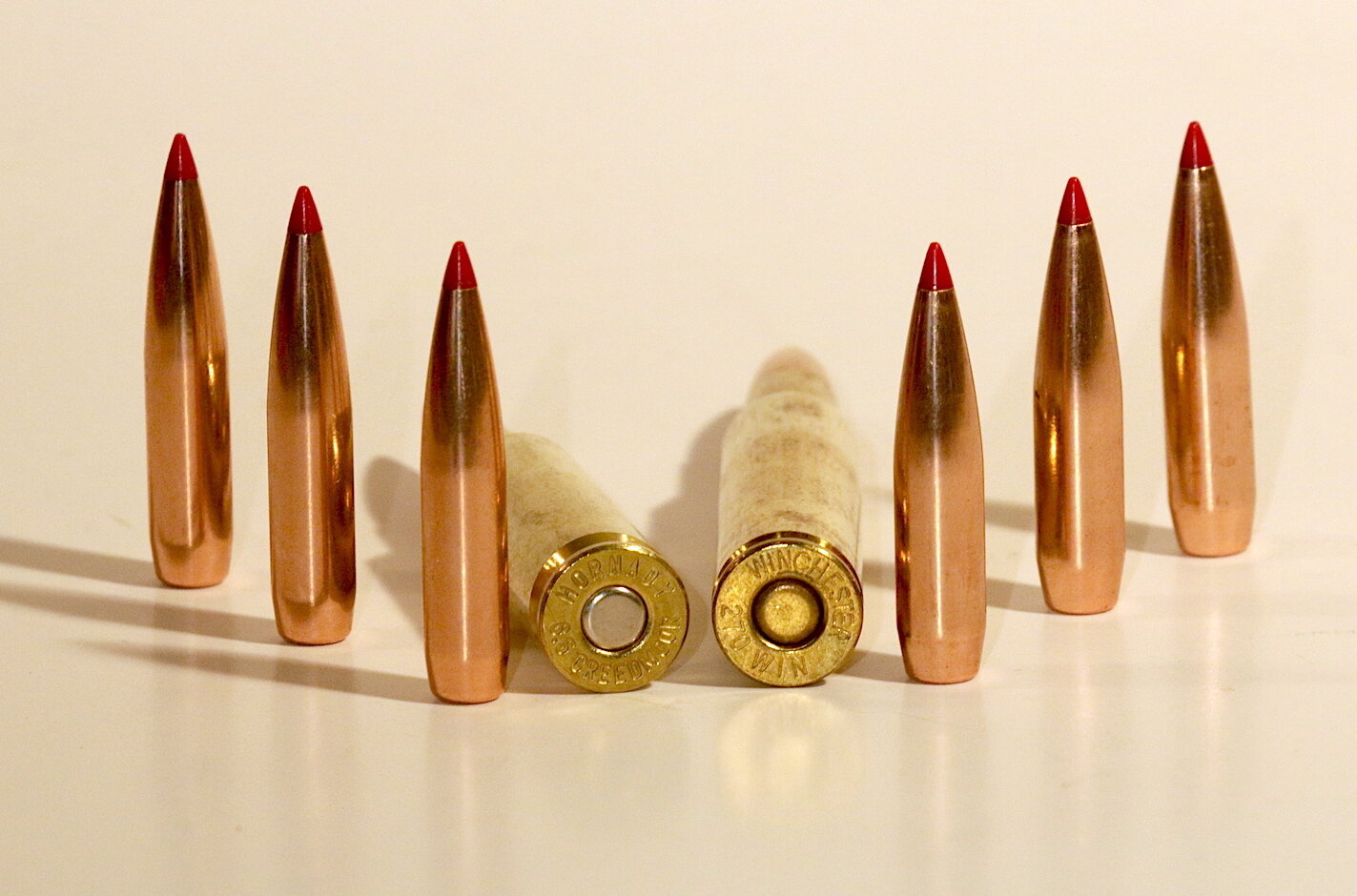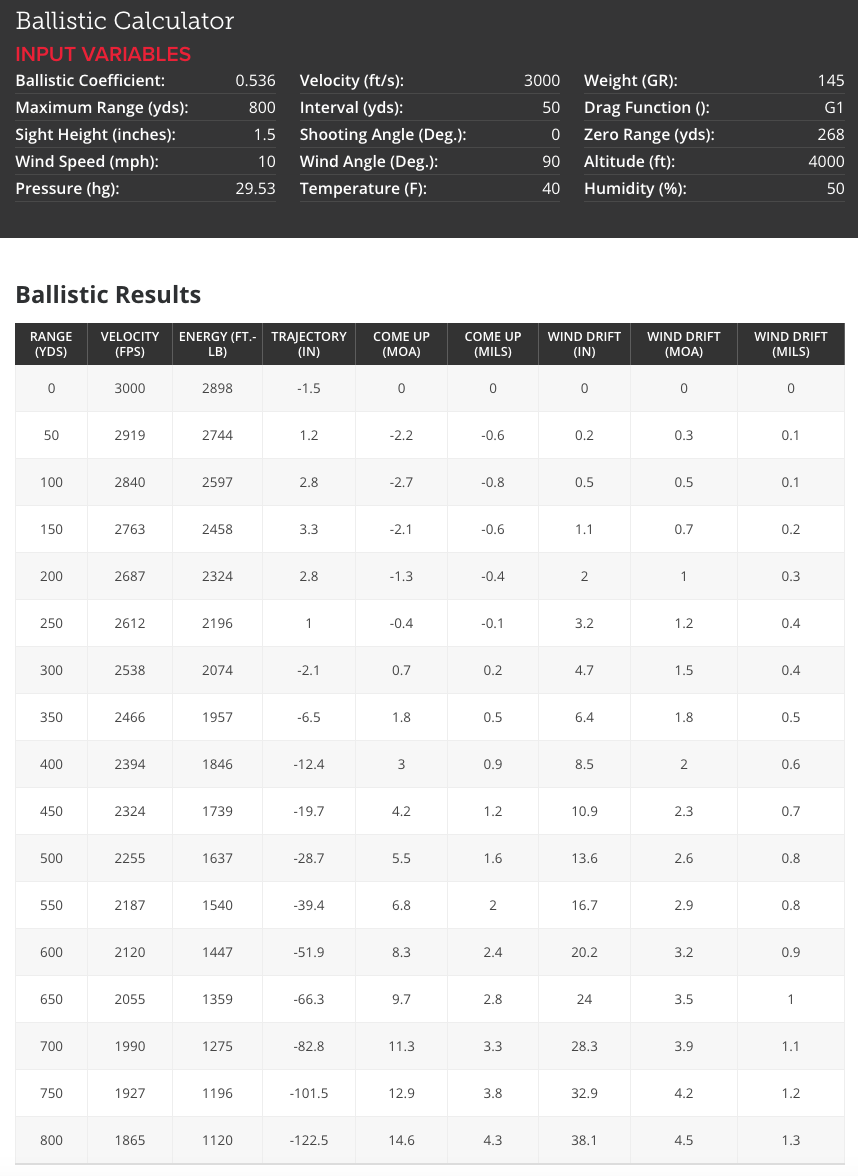6.5 Creedmoor Versus 270 Winchester
Let's have a contest: 6.5 Creedmoor versus 270 Winchester. Which cartridge wins the race?
In my ongoing campaign to shine the light of reality on the "6.5 Creedmoor revolution," I’ve decided to run this 6.5 Creedmoor versus 270 Winchester comparison. I’m not doing this because I dislike either round. I do it because so many shooters/hunters seem to be starry-eyed confused about the "long-range" 6.5 Creedmoor. It’s a fine little cartridge, but it’s being blown all out of proportion thanks to the hot air whooshing around it. Let’s see if we can bring it a bit closer to earth.
Even though the 270 Winchester is a dottering, old heap of a cartridge that has been limping about the world’s hunting fields for 92 years, it remains somewhat capable of tipping over a jackrabbit, perhaps a coyote, and maybe even something a tad larger and tastier. A few hunters have been rumored to have killed elk with it, but let’s not get ahead of ourselves…
Creedmoor Versus 270 Ain't Apples to Oranges
Readers sometimes accuse me of comparing apples to oranges with these ballistic juxtapositions, but this one seems pretty fairly balanced. Heck, there is only a 0.013” difference in bullet diameters between the 6.5 Creedmoor (.264”) and 270 Winchester(.277”.) Try holding your thumb and index finger tips 0.013” apart and you’ll appreciate the huge advantage in wound-opening diameter the .277 bullet enjoys. (Bit of sarcasm there.)
In factory ammo, the 6.5 Creedmoor is usually paired with bullets weighing from 125- to 147-grains. The 270 usually comes in 130- to 150-grain sizes. Because the heaviest 6.5 Creedmoor bullets seem to be the most popular and offer the long range performance most shooters want, we’ll lean to the heavy side.
Twist Rate Favors Creedmoor Versus 270 Winchester
As you probably know, in any cartridge loaded to full power, lighter bullets shoot flatter than heavier ones. (This assumes each has a similar profile. You can’t run a spire point boat tail against a flat-base round-nose and expect a fair race. The extra drag of that blunter bullet ruins its chances.) Heavier projectiles deflect less in crosswinds and retain more energy downrange, but they require fast rifling twist to stabilize. Because the 6.5 Creedmoor was engineered for long range performance with long, high-B.C., .264" bullets ahead of rather light powder charges, standard rifling twist is 1-8-inch. The upshot is a short-action cartridge that minimizes recoil and maximizes barrel life during high-volume, long range target shooting. It just happens that this setup makes for a pretty effective hunting round, too. But is it as good as the 270?
Slower Twist Rifling Limits 270 Winchester
The 270 Winchester was engineered to shoot flatter than its parent case, the 30-06. I doubt high Ballistic Coefficient bullets were on the designers' minds way back in the 1920s. Heck, I don't think the concept of "Ballistic Coefficient" had been invented yet. Velocity had been, and the 270 Winchester pushing a 130-grain spitzer quickly gained a reputation as a flat-shooting speed demon. Rifling twist was standardized at 1 in 10", and that is what hampers wide acceptance of hyper B.C. .277" bullets today. Major ammo manufacturers aren't going to offer bullets too long to stabilize in the thousands of 1-10" twist 270 Win. rifles already out there. That said, there is enough demand from custom rifle builders and re-barrelers that Berger builds a 170-grain .277 Elite Hunter bullet (B.C. .662.) A 1-8" twist barrel is needed to stabilize them, so for this comparison we'll stick with a shorter bullet 1-10" twist 270 Winchester rifles will stabilize.
Matched Bullets For a Fair Creedmoor Versus 270 Comparison
Photo shows boxes of 6.5mm and .277" Hornady ELD-X bullets, perfect for a 6.5 Creedmoor versus 270 Winchester comparison.
To be fair, I’ve selected two of the sleekest, highest B.C. hunting bullets currently offered in factory loaded ammunition (Hornady Precision Hunter) for each cartridge. We’ll stuff the 6.5 Creedmoor with Hornady’s 143-grain ELD-X and the 270 Win. with Hornady’s 145-grain ELD-X. I’ve pulled my muzzle velocities from Hornady’s Handbook of Cartridge Reloading, 10th Edition which, by the way, gives the wrong B.C. for the .277 bullet. According to the Hornady website, they now rate this 145-grain ELD-X .277 bullet B.C. .536, not the earlier .485 as listed in the Reloading Manual. Observant readers will notice that I used the top speed of 3,000 fps with the 270 Winchester, but only the second highest listed MV of 2,750 fps with the Creedmoor. I did this because, while shooting hundreds of rounds of 143-grain ELD-X bullets through six different 6.5 Creedmoor rifles, I’ve yet to see a chronograph reading above 2,750 fps — and rarely that. I have seen 3,000 fps with many 270 Winchesters. I don’t doubt Hornady engineers hit the 2,800 fps they list as a top load through their 24” 6.5 Creedmoor test barrel, but I doubt many of us can safely duplicate it. Regardless, another 50 fps isn’t going to make much difference in the final trajectory, so let’s get right to the numbers as calculated by Hornady’s on-line ballistic calculator.
6.5 Creedmoor Table, 250-yard Zero270 WinchesterTable, 250-yard Zero
Results of the Creedmoor Versus 270 Race
I've included ranges to ridiculous distances for hunting (in my opinion) to clearly show how the superior Ballistic Coefficient of the 6.5 Creedmoor bullet enables it to begin catching up to the velocity of the 270 Winchester bullet. The Winchester's 250 fps velocity advantage at the muzzle has been reduced to just 54 fps at 800 yards. Note that, even though the .277" bullet leaves the muzzle with 497 foot-pounds more energy than the 6.5 Creedmoor, the superior aerodynamic shape of the .264" bullet enables it to conserve more energy. By 800 yards the 6.5 Creedmoor has cut the 270 Winchester's energy advantage to just 78 f-p. I don't think any struck game animal would notice the difference, but in the 6.5 Creedmoor versus 270 Winchester velocity and energy races, the Winchester still wins.As for the Creedmoor's celebrated ability to resist wind deflection, the superior .625 B.C. of that 143-grain bullet certainly manages that. At 300 yards in that 10 mph right-angle breeze, the slower 6.5mm bullet has already deflected less than the .277" bullet. At 800 yards the difference is slightly more than 2 inches. Not huge, but advantage Creedmoor nonetheless.Quite interesting is that the Creedmoor achieves this performance with roughly 15 grains less powder than the 270 Winchester. In a 7-pound rifle, the Creedmoor kicks up 14 f-p of recoil energy compared to nearly 20 f-p from the 270 Win. Neither is exactly a shoulder bruiser, but for recoil sensitive shooters... Advantage Creedmoor.Ah, but there's one category we haven't examined yet. Drop. Check out the fourth column from the left. The old Winchester drops less than the Creedmoor at all ranges. This doesn't amount to much at reasonable hunting distances (just a half-inch advantage to the 270 at 300 yards,) but at extreme range, where the Creedmoor is supposed to be such a champ, it drops considerably more than the 270. Fully 8 inches at 600 yards, 17 inches at 800 yards. Advantage 270 Winchester.
Choose Your Poison, Drop or Drift
Hmmm. Appears the old 270 Win. isn't such a slouch after all. But... the 270's drop advantage is easily compensated for by judicious use of a laser rangefinder and turret dialing or a ballistic-style reticle. And gravity is consistent. Wind is not. Five miles an hour one second, 10 the next. Guesstimate it incorrectly and there's less chance you'll miss with the Creedmoor. Winchester aficionados counter that the mere 2-inch drift advantage the Creedmoor has at 800 yards isn't worth sacrificing the 17-inch drop advantage of the 270. They'll take the extended Maximum Point Blank Range advantage, thank you. When time is of the essence, it's nice to know you can aim dead center on your target and get a vital zone hit out to 300, maybe even 350 yards. With the right MBPR zero, the 270 Winchester wins this contest, though the victory is slight.
Attributes 6.5 Creedmoor Fans Love
Less powder, less recoil, excellent barrel life and minimum wind deflection are 6.5 Creedmoor attributes. They are wrapped in a short-action cartridge. Short-action rifles can be built slightly shorter, lighter, and faster cycling than standard-length action 270s. Whether this amounts to diddly is debatable. Fans of the 270 Winchester can hang their hats on some 90 years of performance excellence, including impressively flat trajectories from a fairly mildly recoiling round. If barrel life is a problem in the 270, I haven't heard about it. With these ELD-X bullets, both cartridges deliver more than 1,000 foot-pounds of terminal energy to 800 yards. If you subscribe to the idea that a bullet needs that much striking force to adequately address a deer, either of these will suffice.
How MPBR Affects the 6.5 Creedmoor Versus 270 Contest
A cartridge's MPBR zero is determined by target diameter and a bullet's peak, mid-range trajectory. It's generally at about 150 yards. Note, if you will, the 150-yard trajectories of both bullets in the above tables. The 6.5 is striking a half-inch higher than the 270, giving it an unfair advantage farther downrange on an 8" target. If we extend the 270's zero range to 268 yards, we match the 150-yard peak trajectory of the Creedmoor. This, then, extends the 270's MPBR and increases its long range drop advantage even more, as this next ballistics table shows.270 Winchester with 268-Yard ZeroHere, then, is a real apples-to-apples ballistic comparison. With both bullets peaking 3.3 inches high at 150 yards, we extend the 270's MPBR (for an 8-inch target with a bit of fudge factor) to about 325 yards while the 6.5 Creedmoor is good to only about 310 yards. At 400 yards the 270 Win. enjoys a 3.8" trajectory advantage.So big deal. Just 4 inches? So what. Well, if you're estimating (not laser measuring) your deer at 350 yards away and it's really 400, you're more likely to miss with the additional bullet drop from the 6.5 Creedmoor.At this point some of you may be shredding your hair. Much ado about nothing! And perhaps it is, but such are the details that keep hunters arguing round stoves and campfires late into the night. An inch of unanticipated drop has given more than one buck another year of antler growth. Hunting, like football, is a game of inches. Regardless what rifle and cartridge we shoot, we need to know those inches.
6.5 Creedmoor Versus 270 Winchester: Final Answer
Whether you choose to risk your inches to wind deflection or bullet drop, you can't dispute the wonderful performance and versatility of both these cartridges. In energy, velocity and drop, the 270 Winchester wins. In wind deflection, recoil, cycling speed, and potentially compact rifle size (short action,) the Creedmoor comes out on top.If you own an accurate, beloved 270 Winchester, you don't need to replace it with a 6.5 Creedmoor. Just look for high B.C. bullets to shoot through it. On the other hand, if you're looking for the 21st century version of 270 Winchester performance with less recoil, the 6.5 Creedmoor could be it.6.5 Creedmoor versus 270 Winchester? They're both winners.(For a comparison of the 6.5 Creedmoor and 25-06 Rem. Author Ron Spomer has shot most cartridges from 22 CB cap to 505 Gibbs and taken game with most of them. The 270 Winchester remains one of his favorites, but it's sharing field time with several 6.5 Creedmoors and other 6.5mms.





















